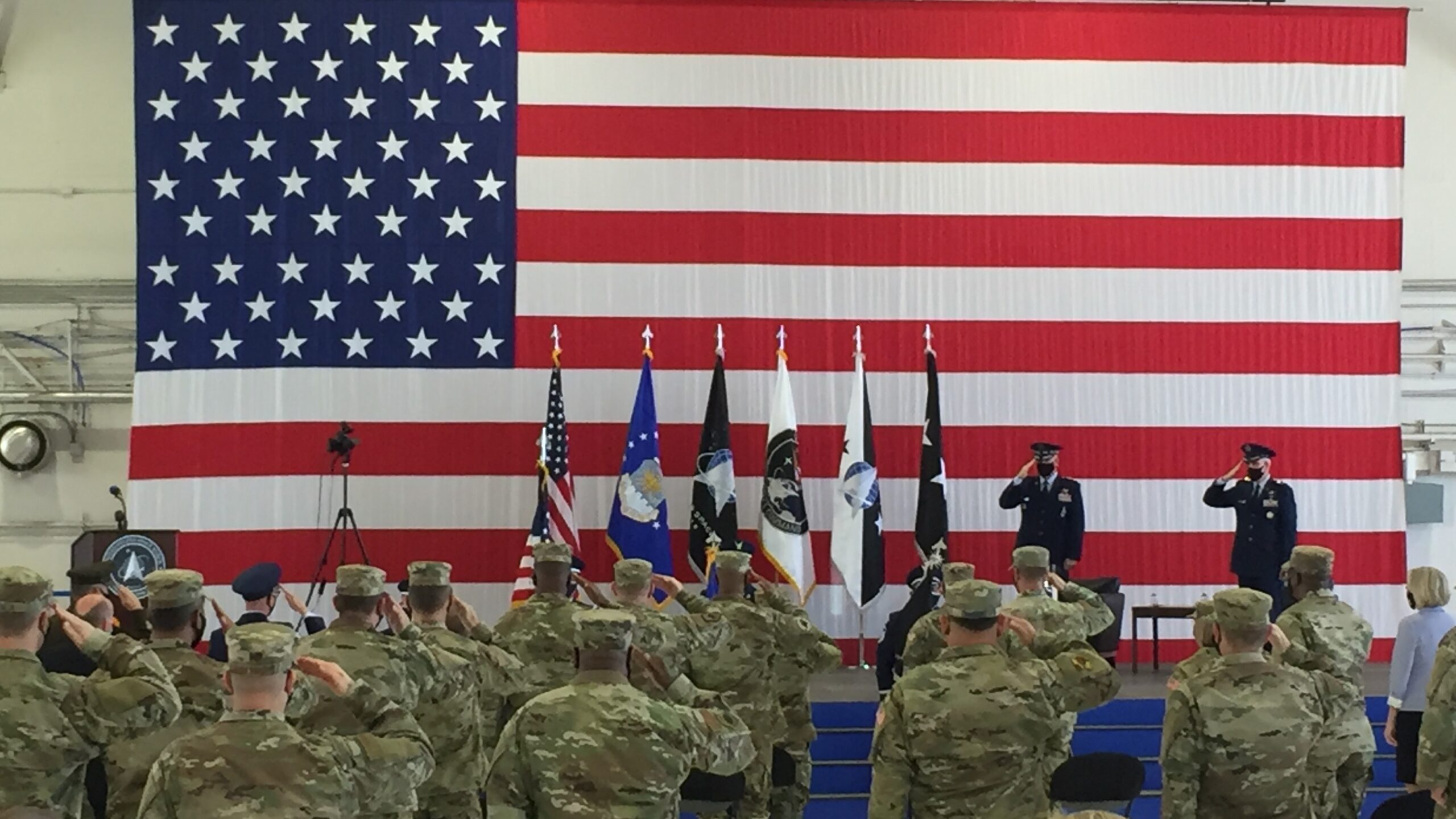PETERSON AIR FORCE BASE, Colorado —Two hours of pomp and circumstance at a 6,100-foot elevation airfield surrounded by majestic mountain peaks put Space Force one step closer to arming space warfighters Wednesday.
The ceremony to stand up the first Space Force field command, Space Operations Command, or SpOC, took place among a socially distanced crowd of some 300 at Hangar 140 on the flight line of Peterson Air Force Base in Colorado Springs.
The signal to adversaries, its new commander told the Washington Examiner, is “how serious we are.”
“We did not choose this reality of making space a warfighting domain,” said Lt. Gen. Stephen Whiting. “We do not want a war to extend into space or to start in space. But if somebody picks a fight with us there, we will win.”
Whiting said that now that SpOC is on the books, there is a command within Space Force only focused on the warfighting mission in the space domain.
The new commander acknowledged, however, that he is not starting from scratch. The 14th Air Force “Flying Tigers,” headquartered at Vandenberg Air Force Base in California, was redesignated as SpOC along with its global assets and personnel. That includes a new organizational structure consisting of nine “Space Deltas,” each with unique space missions.
Those missions include electronic warfare, missile warning, cyberspace, and GPS warfare.
In addition, SpOC will oversee two garrisons responsible for some 26 mission locations worldwide in places such as Niger, Africa, Greenland, and in the Pacific. A command and control center will be based at Vandenberg and two space wings, the 30th Space Wing at Vandenberg and the 45th Space Wing at Patrick Air Force Base in Florida.
“They launch all of the national security space satellites into orbit. So they provide us access into orbit,” Whiting said of the space wings.
Space Command’s Army Gen. James Dickinson put into perspective the significance of the SpOC standup by comparing the original Space Command mission established by President Ronald Reagan in 1985.
“In the days of the first Space Command, we often spoke about support for the warfighter,” he said. “Today, we are the warfighter.”

Dickinson, who oversees the warfighting aspect of space operations as head of Space Command based at Peterson, was balanced by the comments of Space Force commander, Gen. Jay Raymond, who overseas training and doctrine and traveled from Washington, D.C., for the event.
“I’m convinced a war in space would be fought at high speeds and over great distances,” he said. “We must be fast and agile.”
In 10 month’s time, the Space Force has added some 2,500 permanent space professionals and some 15,000 administratively assigned Air Force airmen. Whiting argued that represents a rapid standup for America’s newest armed service.
“The speed at which we’ve stood up is actually kind of breathtaking,” he told the Washington Examiner.
Whiting insisted that adversaries should view the SpOC standup as an important step forward.
“It’s just another step to show them how serious we are now,” he said. “We will just be the professional space warfighters whose only job is to prepare for a war we hope never happens.”
Whiting also addressed the possibility that future Space Force units may adopt acronyms with a nod to fictional Star Trek names.
“We don’t intentionally choose those that way,” he said. “If any naturally happen, you know, that’s not the end of the world either.”





